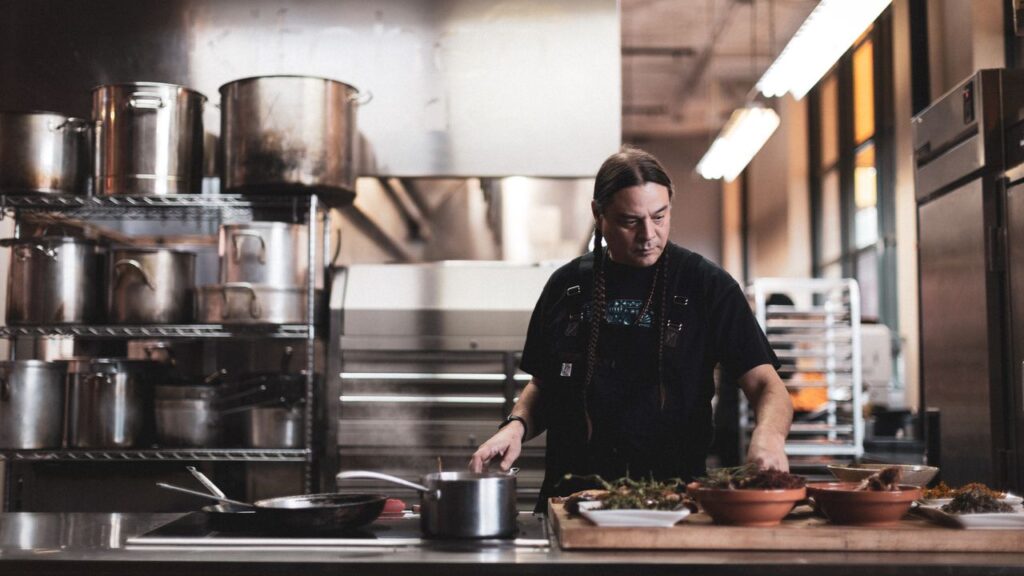Wild rice is one of the best-known Native staples across the country, and this water-grown grain can swing savory or sweet. The latter is often enjoyed at breakfast or as a hearty snack, tinged with maple syrup and dotted with nuts and berries. Simple yet satisfying, it’s a mainstay on the menu at Owamni, James Beard Award-winning Oglala Lakota chef Sean Sherman’s bastion of decolonized fare that sits along the banks of the mighty Mississippi River in Minneapolis.
Grape Dumplings
Oklahoma
Several of Oklahoma’s 39 federally recognized tribal nations have their own take on grape dumplings, which in so many ways represent the complicated history of Native communities. This dish migrated from the Southeast Woodlands in the 1800s alongside the tribes that were forcibly removed from their ancestral homelands to what was then dubbed Indian Territory in present-day Oklahoma. Honoring tradition, cooks like Osage chef Ben Jacobs boil tender corn mush dumplings in wild (or, these days, sometimes store-bought) grape juice and serve them in a thickened, fruity sauce. “Grape dumplings are almost always on the table at a feast meal,” he says. “For me, the aromas of burning blackjack wood, slow-smoked meat, hominy corn, and syrupy sweetness in the air evoke family and community.”
Wóžapi
South Dakota
In neighboring South Dakota, wóžapi (sometimes spelled “wojape”) is a Lakota favorite, served for both important ceremonies and everyday meals. Available at restaurants like Owamni and Javelina in Portland, Oregon, this thick sauce is made from wild chokecherries as well as blueberries, blackberries, huckleberries, and other seasonal berries and tops everything from fry bread to ice cream to braised bison. For chef Sean Sherman, it holds special significance: “I remember summers as a kid on the Pine Ridge Reservation and around the pine-scented Black Hills, where we harvested the bountiful chokecherries with fingers stained dark red—knowing even then that it was about more than just fruit.”
Atole
New Mexico
Blue corn is synonymous with the Southwest, and this comforting warm beverage is just one of the ways to enjoy it. As is the case with so many Indigenous delicacies, a handful of unassuming ingredients—cornmeal, water, milk, cinnamon, some sweetener of choice—are whisked together to create a frothy, delicious drink. A traditional beverage that’s enjoyed on both sides of the US/Mexico border and is a street-vendor staple in many Mexican cities, atole has a nutty, earthy flavor and is often paired with Mexican sweet bread. Post-meal bonus: It is thought to aid with digestion and gut health.
https://www.cntraveler.com/story/indigenous-desserts-in-the-us


